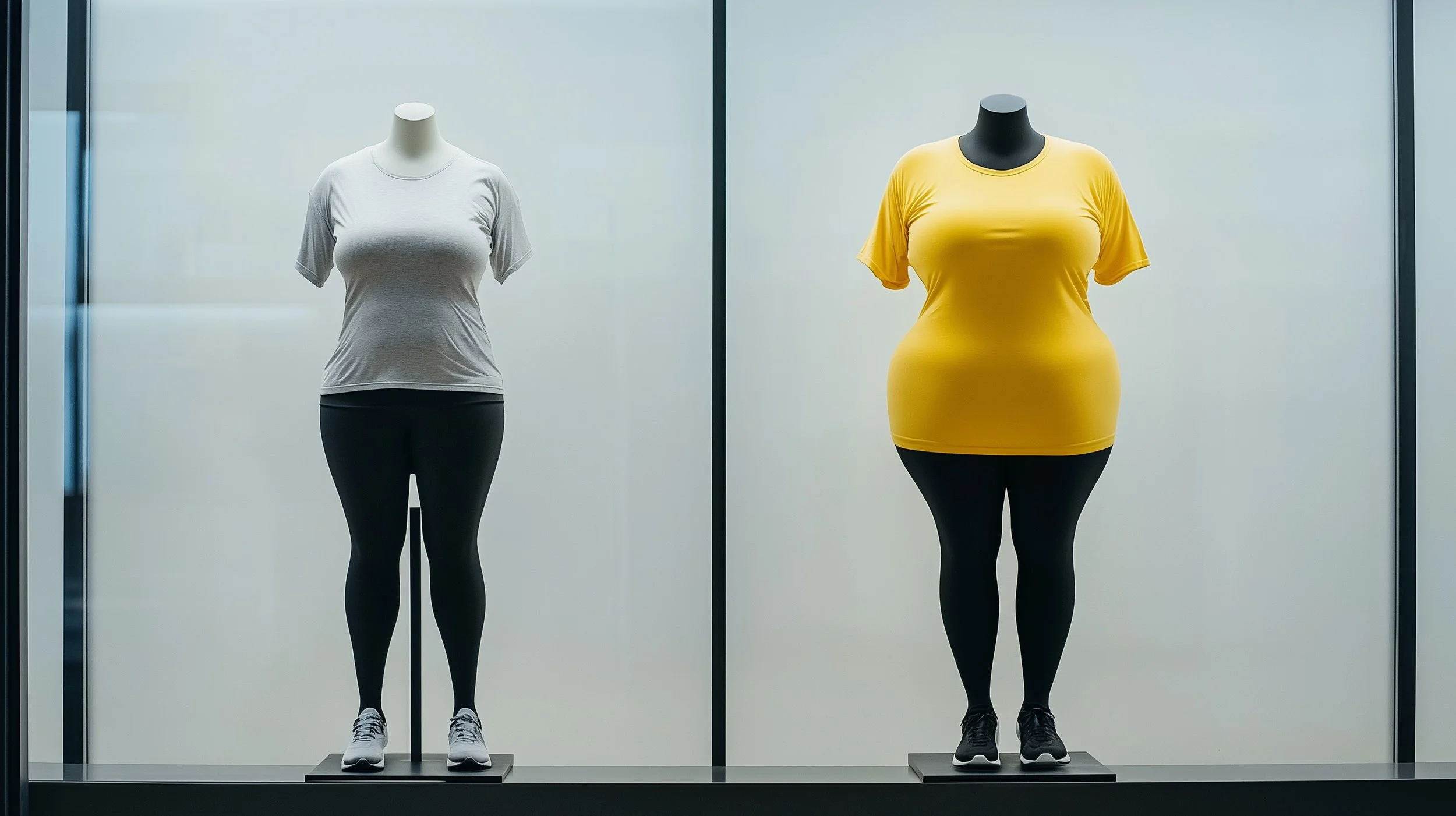Why Your Extended Sizing Needs Two Patterns
If you find yourself/your brand in a size inclusivity conundrum, you’ve come to the right place! I get it, this topic is important for the growth of your fashion brand. You want to represent a diverse customer base and this includes a range of sizes.
A common request that I get is: “I have my patterns graded up to XL. I know you specialize in plus sizes. Can you grade this to be plus size?
This is admittedly a tricky question. I wish I could give you a definite yes/no answer. But it doesn’t really work that way. It’s a little complex, but let me try to explain it.
If I say yes
This means I’m just taking your XL (example) and grading on a few sizes. There is nothing really special about me doing this. There’s not a secret plus size grade that I know and can easily apply. I may have small grading touches that I do for plus sizes, but nothing that would guarantee a better fit for your larger sized clients. I can absolutely grade on a few sizes for you, but so can your original grader.
If I say no
This means I’m saying that grading won’t solve your inclusivity problems. It’s going to be more complex than just grading and we need to discuss some options.
Grading can technically make you size inclusive
Grading up to create plus sizes is an easy fix if you just need to say you are inclusive. Yes, you will have clothing that will fit the circumferences of a larger customer, but the fit is not going to be the best.
When a pattern is graded past a certain point, the original shapes distort and really does not reflect any particular body anymore. Plus size grading tends to be done in larger incremental jumps which exacerbates the distortion situation further.
I only recommend the grade up for inclusivity if your item if you fit into one of the following scenarios:
You want to see if there are plus size customers wanting your clothing- it’s a test offering.
You are doing an oversized/simple shaped garment or a skirt.
You just need to look inclusive on your size chart (you don’t even have customers for this, but people are talking and being mean online).
You have zero budget for plus size patterns but you need something right now.
You only need maybe one or two additional sizes and creating a second pattern doesn’t make sense.
How to be successful in size inclusivity
Instead of grading you need another pattern for plus sizes. Now I know that this makes 100% sense that I would try to convince you of this because I potentially make a little more money from this type of project. However, it is the truth that if you truly are invested in serving a larger size customer, after a certain point in your sizing, a new pattern needs to be made to accommodate this customer.
The thing is, especially if you are creating clothing for plus sized women, grading doesn’t solve the common fit issues that larger bodies tend to have such as different bust, waist and hip proportions than your original size, larger bust projection, and narrower shoulders, to name a few.
At this point you may be feeling a little woozy with the thought of doing a second pattern. Oh the work! But don’t worry, I can definitely help out. But if it feels like too much then you may want to revisit grading on the sizes you need and then coming back to this when you have the bandwidth. I get it. I’m just sharing what a growth strategy looks like.
How does creating a second pattern work?
Listen, it’s going to be easier than you think! Here’s what we do:
I’ll ask you about your sizing and we will discuss what the new extended sizing will look like.
If you need it, I will build on to your size chart for you, so these new sizes are represented.
Based on the new sizing, you will need to decide on what the sample size is for this second pattern. You should have someone available to try on garments in this size. But we will get into the nitty gritty when we get there…
I will need a copy of your existing pattern to take the specs I need from it.
I’ll make you a new pattern. You try it on your model and give me feedback.
I’ll grade the pattern and you are officially size inclusive!
Size inclusivity full disclosure
Yes, being inclusive means increased costs for product development and production timelines. It’s a big pivot to make and I always want my clients to be fully aware of what to expect. In all aspects, basically your cost could double for pattern making, grading, sample making, models, and fabric. But if done right, you could potentially reach an entirely new customer base!
Size inclusivity is not a trend so I want you to be prepared to do what works best for your fashion brand. More and more brands are investing in this as part of their processes. For many of my clients, it started out as a big undertaking, and now it’s just a part of the regular workflow. The hard part, like anything else, is just getting started.

